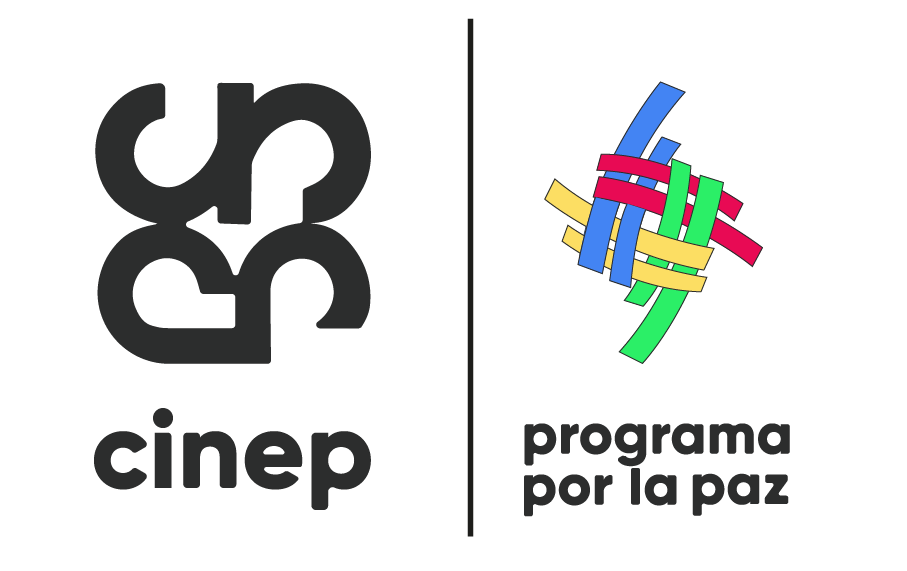The people of María La Baja are clear about one thing: the water that comes out of the storm drains in their homes is not fit to drink. If they drink it, they get stomach aches and diarrhoea. If they bathe in it, they get rashes and itchy skin.
To avoid this, families in urban areas manage in various ways, including drawing water from deep wells dug in the yards of their homes, or paying to fill their water tanks from a tanker belonging to the company Sabia Naturaleza, better known in the community as ‘Agua Yimis’, which brings water from a spring near the village of El Níspero, in María La Baja.
In rural areas, the situation is more complicated. “Even the centre of María La Baja does not have access to drinking water, imagine the situation here,” complains Danelis del Carmen Nisperuza, head of the La Suprema community, a group of 66 families with health problems: “The children are always sick, they always have diarrhoea, they always vomit, their skin itches.”
The paradox is that in May 2012, the then President of the Republic, Juan Manuel Santos (2010-2018), announced the inauguration of the aqueduct in the urban area of María La Baja, but the inhabitants of the community claim that the water they receive is of poor quality, and the rural area has been relegated to networks that bring the liquid to the houses, but it has never been drinkable. “The drinking water didn’t stay, it went with the president,” the locals say ironically.
Denilsa Julio, one of the many black women heads of households displaced by the armed conflict in the region and trying to rebuild their territories, complains: “The owners of the water are not the small farmers, but the big landowners, the owners of large palm and pineapple plantations.”
Water contamination by agrochemicals
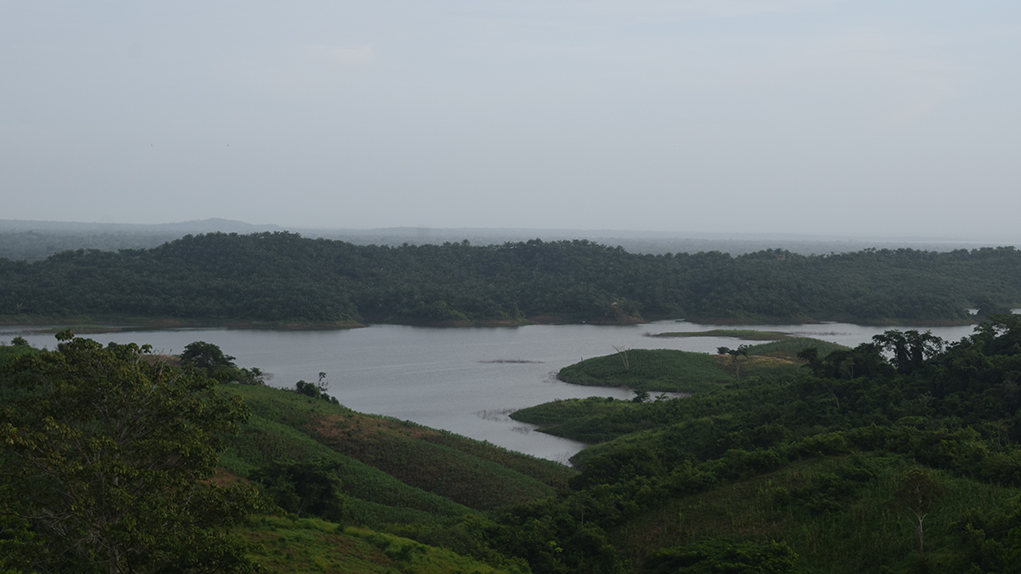
Rural residents have warned about the impact of oil palm and pineapple plantations near canals and rivers, and monoculture plantations at the foot of the district’s irrigation dams (Read more: Without drinking water, it is not possible to enjoy the territory).
“Before, it was water that could be consumed with no consequences, but with all these pineapple and palm plantations, to which they add a lot of chemicals and which are on the banks of the jagüeyes (surface water reservoirs), the wells, the canals, when it rains, all the agrochemicals that they irrigate also get into the water,” says Danelis del Carmen, a leader of La Suprema.
VerdadAbierta.com asked the Regional Autonomous Corporation of the Dique Canal (CARDIQUE), the environmental authority responsible for the María La Baja irrigation district, and the Ministry of the Environment if they were aware of the impact of palm and pineapple plantations on the banks of the dam on water quality, what studies they have carried out and how they control these crops, but at the time of going to press there had been no response.
“As far as we know, those who plant palm trees do not use this type of agrochemical,” says Fredy Martínez Pereira, head of operations and conservation for the Users Association of the Maria La Baja Large Scale Irrigation and Land Adequacy District (USOMARIALABAJA), which has managed the irrigation district for more than 20 years.
“But how can there be palm trees, pineapples and even cattle around and inside the dams of the irrigation district? There is a demarcation line, but I don’t know how these people got the title to the land inside the reservoir,” admits Martínez.
A situation, he explains, that worries USOMARIALABAJA and that the Rural Development Agency (ADR), which owns the reservoirs, is aware of. This situation has been denounced by rural communities and organisations not only in María La Baja but also in other communities surrounding the dam, such as El Carmen de Bolívar and San Jacinto.
“The water in the dam is not as dirty as the water that comes in through the pipes, it does not smell bad,” explains Gabriela Castro, one of the many women from Palo Altico who agree that the water they drink from the surface of the dam does not resemble the water that comes in through the pipes.
Many families have to tie a piece of cloth to the mouth of the plumes to catch the sediment and worms that come through the pipes. “It brings worms, it must have a scientific name, like little parasites,” explains Sofía Carrasquilla.
Katleen Marún Uparela, lawyer, professor and researcher at the Technological University of Bolívar, indicated that a recent study carried out by the university and the Institute of Public, Regional and the Government and the University of Cartagena wanted to determine the presence of agrochemicals in the waters of the San José de Playón and Pondaje del Viento dams and some of their tributaries.
Samples were taken in October 2021 (winter) and May 2022 (summer) and sent to a laboratory in Germany for analysis. “This type of study requires expensive reagents,” says Katleen.
María Soledad Castro, an expert on agrochemical contamination and a researcher at the University of Zurich, agrees. She says that measuring the presence of pesticides in water is a very expensive and complex process that environmental organisations are generally unable to carry out.
Castro points out that when looking for traces of contamination by these substances, “you don’t find what you’re not looking for”, and that unless specific pesticide residue analyses are carried out that analyse both these substances and their metabolites, their presence will not be detected.
“Because we had very little money to carry out the study,” adds Katleen Marún, “the laboratory required us to have a pre-established or prior list of agrochemicals that we thought might be present in the water so that they could then go and look for them.”
However, the results of the study, carried out by the Technological University of Bolivar and the University of Cartagena, were inconclusive about the presence of agrochemicals: “What we were told is that these types of components generally do not remain dissolved in the water for a long time, but go to the bottom of the water body, so it is necessary to carry out a study of the bottom of the water body to determine the quantity of these agrochemicals.”
Nevertheless, the research produced worrying information. Tests showed alarming levels of E. coli – intestinal bacteria found in animal and human faeces – and low oxygen levels in the reservoirs. “At a depth of five metres, there is virtually no dissolved oxygen in the body,” says Katleen, warning that this finding explains why there have been fish deaths in the reservoirs, as they cannot support aquatic life.
Claiming their rights
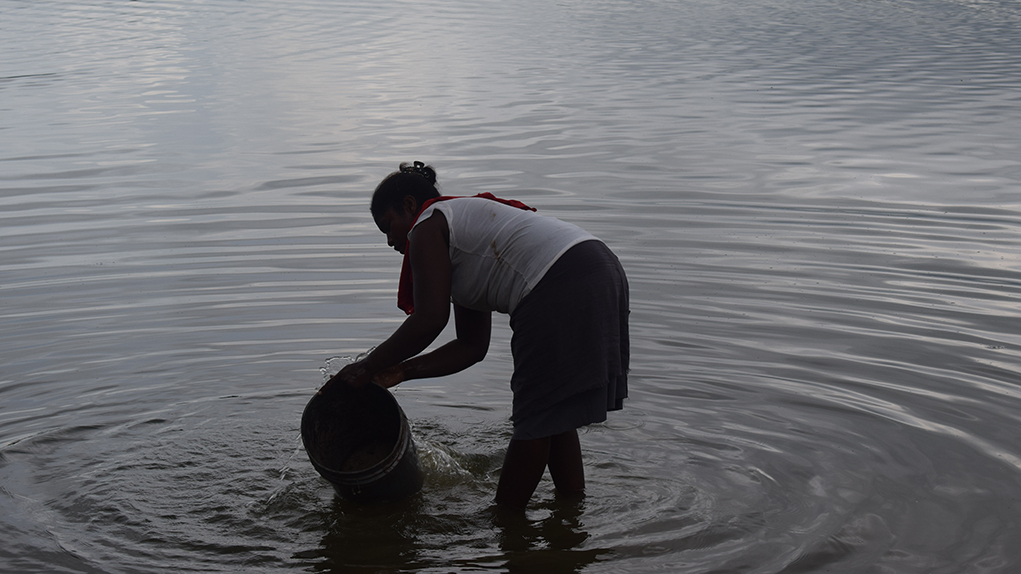
Although it was not designed to supply an aqueduct, the water that reaches both the urban centre and the hamlets of the municipality comes from the reservoirs of the irrigation district. “In terms of access to water, it’s an uncomfortable feeling to be a resident of this municipality, because we have a dam, in other words, there’s a fairly large water resource up there – the Arroyo Grande reservoir – (…) but it’s not drinking water,” says Gabriela Castro, head of Palo Altico.
A study published in 2018 by three researchers from the Faculty of Law of the University of the Coast, based in Barranquilla, warns that rural communities in the municipality continue to consume the vital liquid with faecal coliforms, bacteria from the intestinal tract of animals and humans that pass into the faeces.
“The high presence of E. coli (Escherichia coli) (…) severely degrades the quality of the water and endangers human health. Consumption of water from this area should be avoided unless (sic) it has been previously treated,” the document reads.
In the Montes de María region, the municipality of María La Baja has the second worst coverage of drinking water by aqueduct (24.69 per cent), followed by San Jacinto (0.69 per cent), according to the 2018 DANE census, which will be confirmed in January 2020.
“We went on marches, we held protests, we closed the sluice gates that let water out of the irrigation district to put pressure on the municipality,” says Sofía Carrasquilla.
After the social mobilisation led by this community in October 2018 to demand drinking water, some investments were made by the departmental administration, but the local administration abandoned them. According to this leader, in the case of San José de Playón, the governor’s office completed the works around a storage tank, but the mayor’s office of María La Baja did not comply with the distribution networks. “Drinking water is not available in these areas because the institutions do not want it,” adds Yuliza Magallanes, a young leader from San José de Playón.
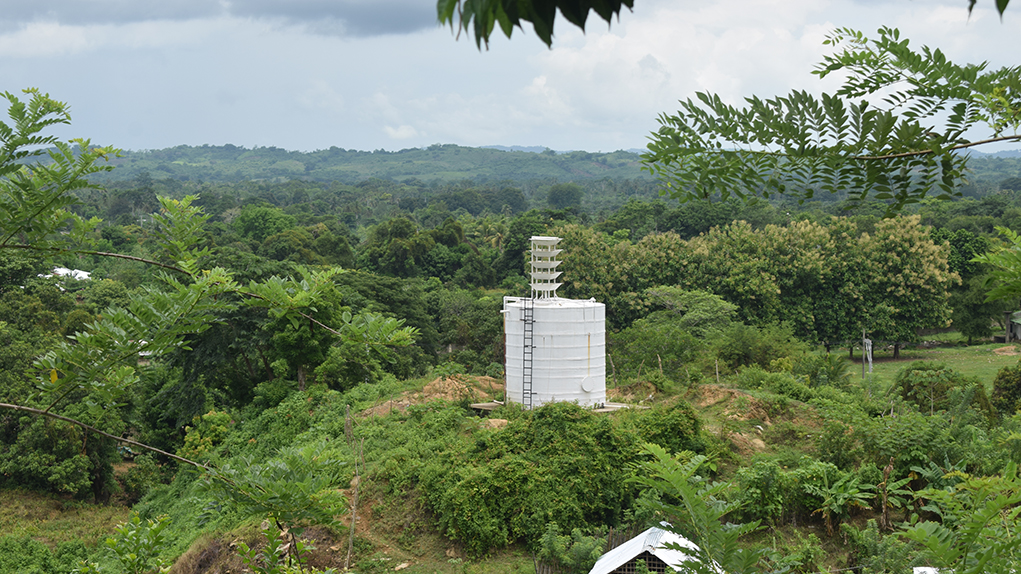
Article 5 of Law 142 of 1994 states that the municipalities are responsible for “ensuring that their inhabitants are efficiently supplied with water, sewerage, sanitation, electricity and basic public telephone services through public, private or mixed utilities or directly by the central administration of each municipality”.
The local government, led by Mayor Raquel Victoria Sierra Cassiani (2020-2023), is aware of the acute situation faced by the municipality’s rural communities. This is why, on 4 April 2021, it issued Decree 081, declaring the urgent need to deal with the devastating effects of the COVID-19 pandemic on public health and the poor state of the aqueduct networks in rural areas, including San José Playón, which have systems supplied by deep wells, “but the networks are found with incrustations and the presence of sediments”, as the Mayor’s Office acknowledges in its decree.
The current Municipal Development Plan (2020-2023), entitled “María la Baja First in Victoria”, has drinking water and basic sanitation as one of its economic development axes, with the sustainable development objective of “guaranteeing the availability of water and its sustainable management and sanitation for all”, which is articulated with the Departmental Development Plan, which identifies aspects such as increasing the coverage of drinking water in the rural sector as welfare indicators.
Since July 2021, the local government has signed contracts to develop design studies for drinking water treatment plants in several corregimientos and veredas, including San José de Playón and La Suprema. However, this grand plan has not been implemented in any of the rural communities.
Did the Mayor’s Office get washed away?
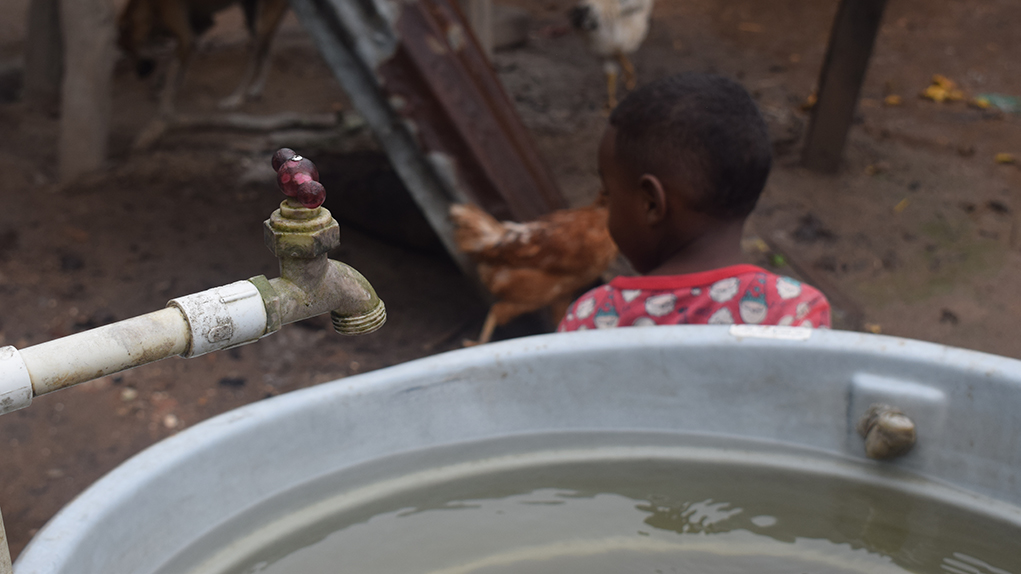
Aguas de Bolivar, a decentralised entity of the Bolivar government responsible for the management and execution of investment projects for the construction of aqueducts and sewerage systems, stressed that on 15 December 2020, it handed over several facilities in María La Baja in “good condition and working order”.
However, following an enquiry by this portal, Aguas de Bolívar said that the Mayor’s Office of María La Baja was not complying with the disinfection processes of the water it is responsible for in rural areas such as Palo Altico, San José de Playón and La Suprema, and the communities continue to drink water that is unfit for human consumption.
“Unfortunately, their management and operation have not been permanent and efficient,” Gonzalo Posada Viana, head of the institution’s Communications, Promotion and Social Management Advisory Office, told VerdadAbierta.com.
In the case of La Suprema, the water treatment plant is located a few metres from the peasant community, but despite living next to it, the residents do not benefit from it, as it only supplies drinking water to the municipality’s capital, María La Baja.
Since 2013, this plant has been managed by Sociedad de Acueducto, Alcantarillado y Aseo del Norte (Northern Water, Sewerage and Sanitation Company) S.A.S. E.S.P. (better known as Triple A of the North). According to the minutes of the General Shareholders’ Meeting of July 2022, 75% of Triple A’s shares were held by the company Distribuidora Silgado Verbel Oil SAS, legally represented by Oscar Ivan Silgado Verbel, who has been its legal representative for more than 10 years.
The company has been denounced in the Montes de María region for poor water treatment. In June 2018, the residents of San Onofre brought the critical situation to the attention of the Departmental Comptroller of Sucre, who in turn asked the company for documents reflecting compliance with the supply of drinking water in the municipality, but the company did not provide all the documents, so in February 2019 the control body initiated a sanction process.
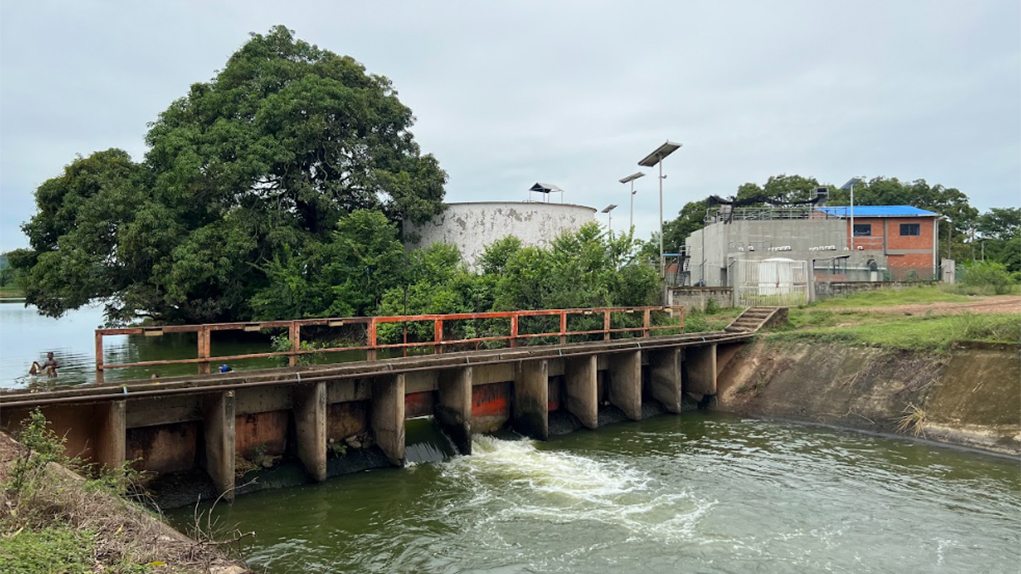
On the other hand, the company’s director of operations, Víctor Silgado Banquez, told this portal that “María La Baja is one of the few municipalities in Bolívar with good water and sanitation services”, adding that “during our administration, 100% of the sewerage system was built in 2017 and the optimisation of the water system was carried out in 2018”.
He also explained that the water that arrives in the municipal capital goes through different processes to optimise its quality: “The drinking water treatment plant is active and works 24 hours a day, 365 days a year”. And he specified that they have the operational and professional resources necessary for its operation. However, the inhabitants of La Suprema, not to mention the rest of the rural area, do not benefit from all this.
The town council signed an agreement with the company Triple A del Norte to guarantee the supply of treated water – but without disinfection – to the operators of the La Suprema aqueduct.
“At the moment there are some operators who pay them to be responsible for the water, but they do nothing,” says Ana Milena Monterrosa, a community leader. “The water is completely yellow, they don’t chlorinate it or anything, and sometimes it smells and has a lot of parasites in it.”
This portal tried to find out who the operators of this service were but did not receive a reply from the mayor’s office.
During visits made by Aguas de Bolivar, the operators explained that they had not received the necessary chemical inputs from the city council to disinfect the water. “As a result, in recent months the community has received water from the operators without disinfection,” Posada Viana told this portal.
In the same or worse situation are the families of San José de Playón and the village of Palo Altico, because “since the aqueduct was delivered, it has not been working properly”, explains Posada Viana, who admits that the community continues to get its water supply directly from the dam, “even though it is not fit for human consumption”, adding that this situation hurts the village’s distribution network “because the pipes are clogged.”
In addition to maintaining the aqueduct, it is the responsibility of the municipal government to manage resources and prioritise drinking water and basic sanitation projects that require financial support from the state.
The Ministry of Housing, Cities and Territories, through the Vice-Ministry of Water and Basic Sanitation, confirmed to this portal that in the information system there are some aqueduct, drinking water and sewerage projects, but “to date no project has been received to achieve the efficient and effective provision of aqueduct and sewerage services in the municipality of María La Baja – Bolívar”, reads the reply signed by Adriana Sabogal Moreno, Director of Infrastructure and Business Development of this government department.
Aguas de Bolívar told VerdadAbierta.com that it is carrying out technical visits, topographical surveys, cadastral surveys and user diagnostics in Playón: “The project did not include the installation of new distribution networks, which is why the existing ones are inadequate or have deteriorated. However, it should be noted that Aguas de Bolivar is in the process of contracting the studies and technical designs for the drinking water distribution networks in Playón and Palo Altico”.
The company has made a preliminary investment of 188 million pesos to build these water distribution networks in these and other districts of María La Baja.
However, the women leaders complain that every four years a new mayoral candidate promises the dream of the whole community: drinking water, but they are tired of the failure to deliver. “It is also frustrating for those of us who are leaders in the communities,” laments Sofía Carrasquilla. “Whoever becomes mayor has to take responsibility. What is lacking is a lot of will,” she concludes.
Note: This portal sent a questionnaire to the Mayor’s Office of María La Baja, headed by Raquel Victoria Sierra Cassiani, to find out what measures the local government has taken to guarantee drinking water to rural communities. Despite conversations via WhatsApp with several local officials, no response had been received by the time this report was published.
***
This report was produced by the Caribbean Women’s Coalition for Land and Territory and the Stand For Your Land-Colombia campaign.

